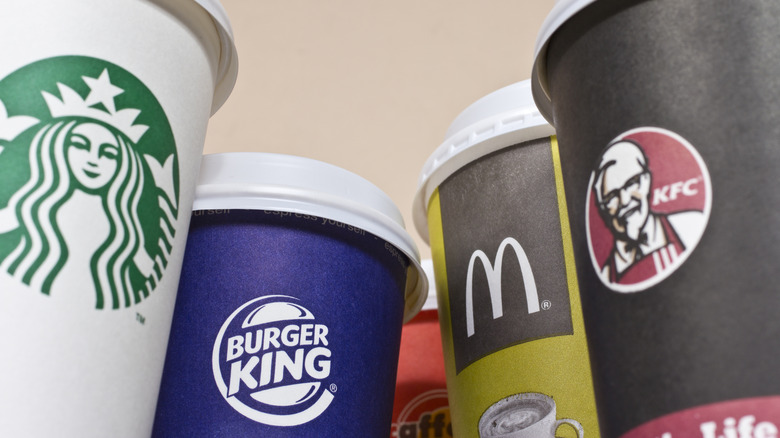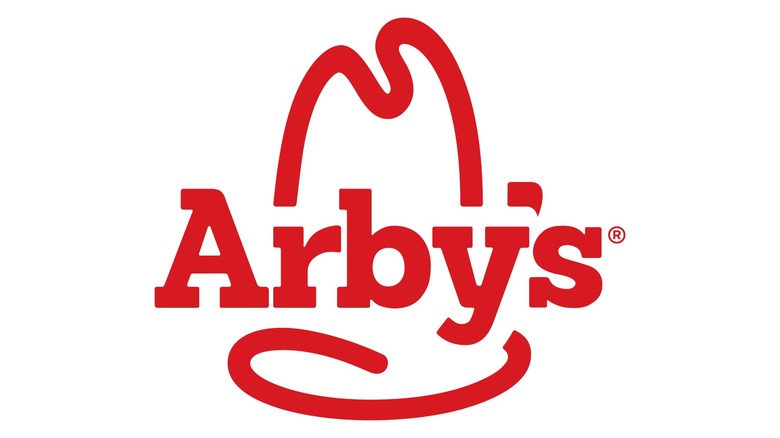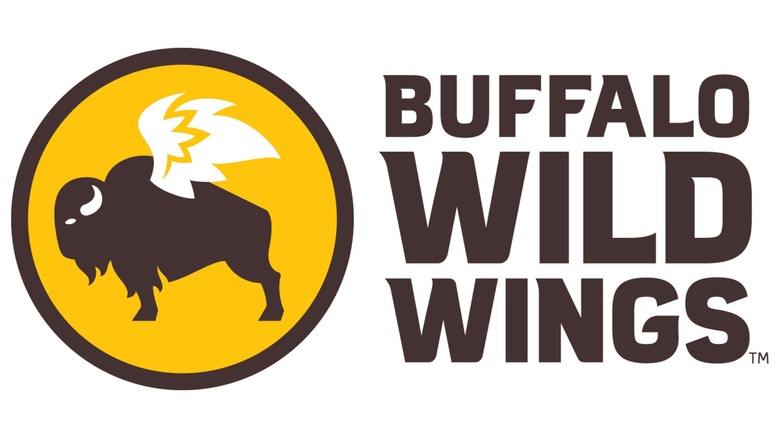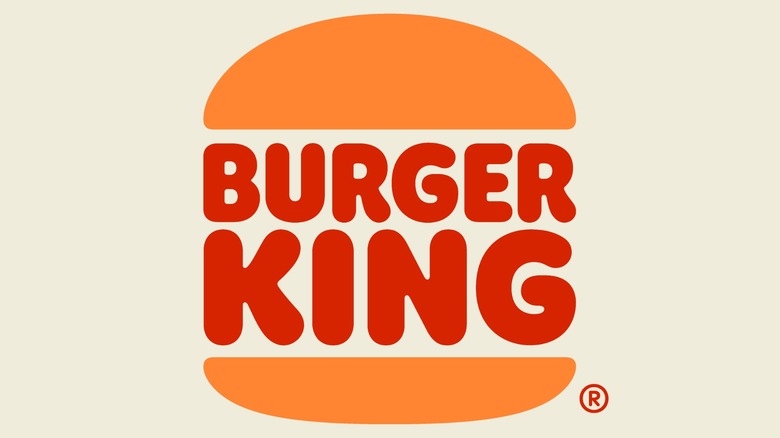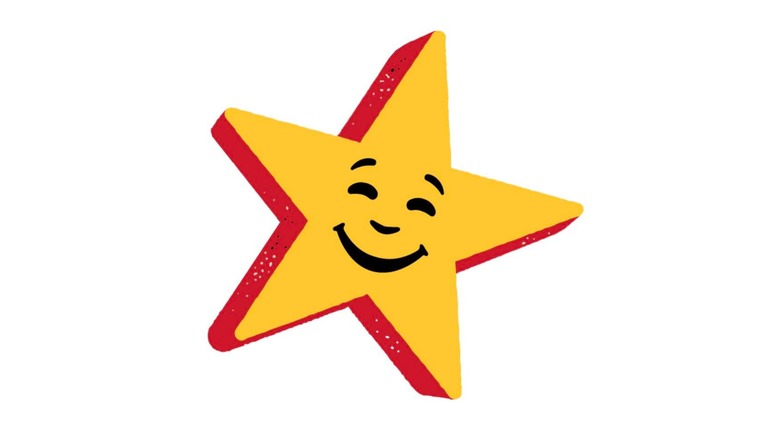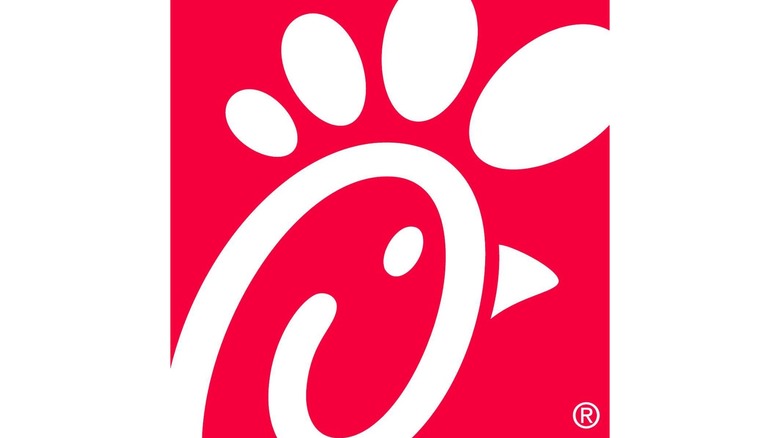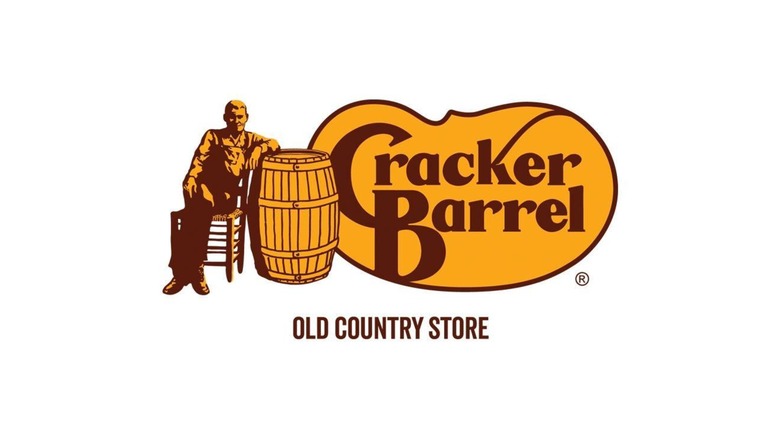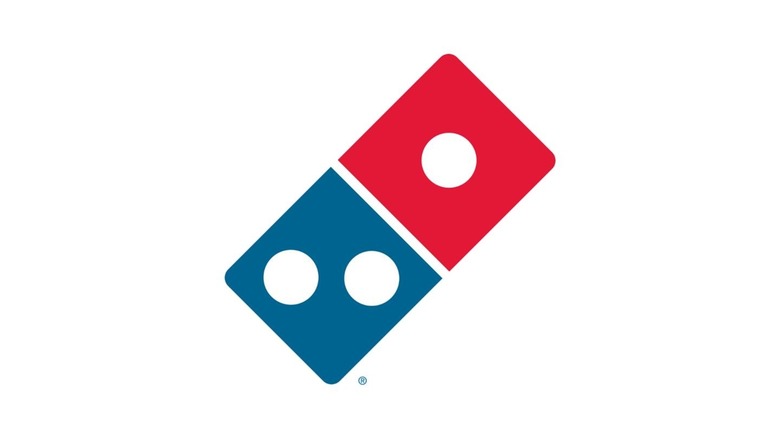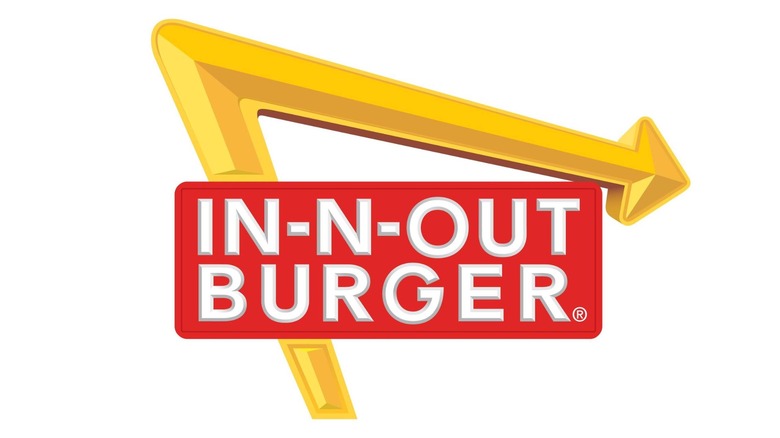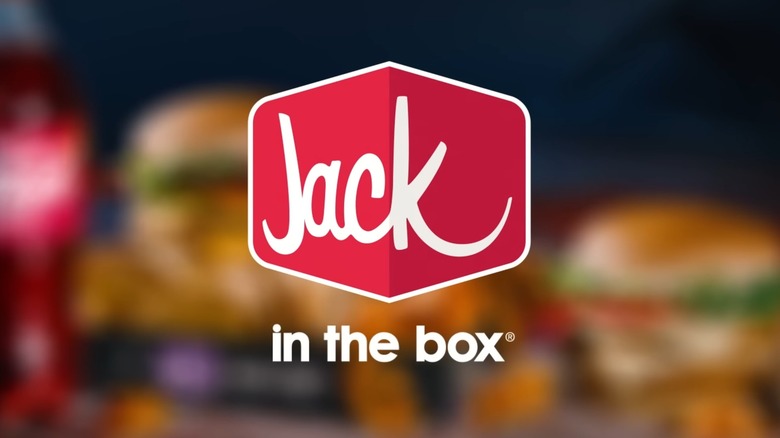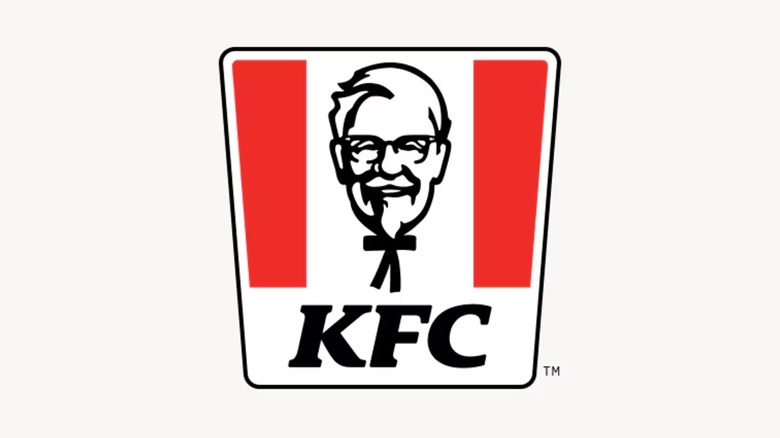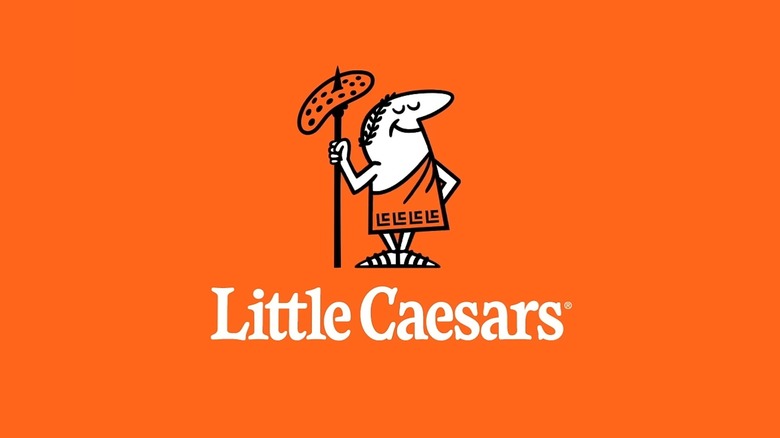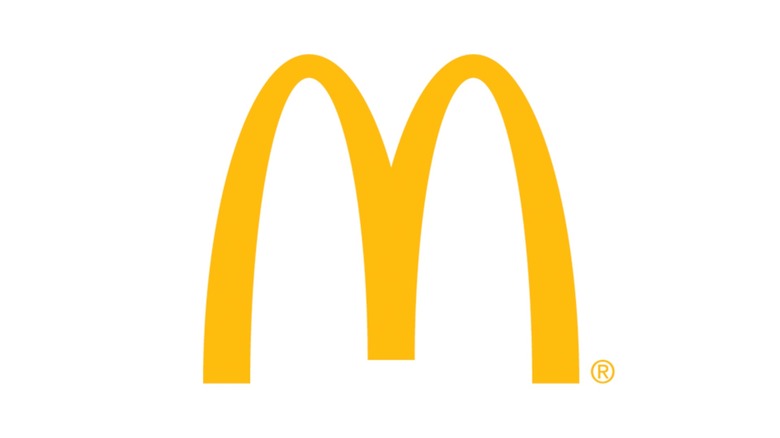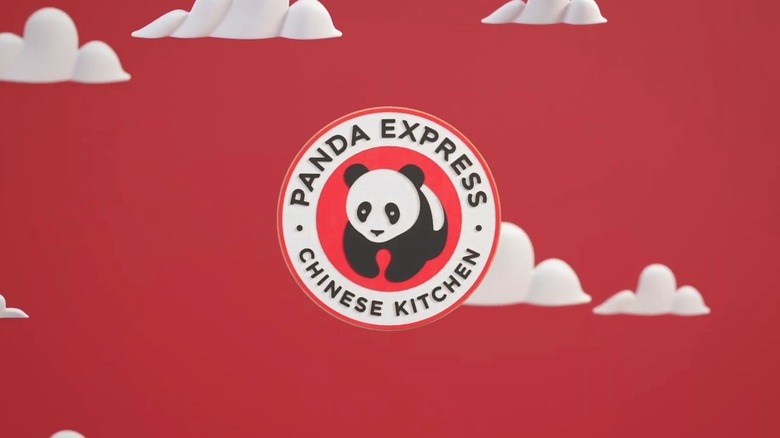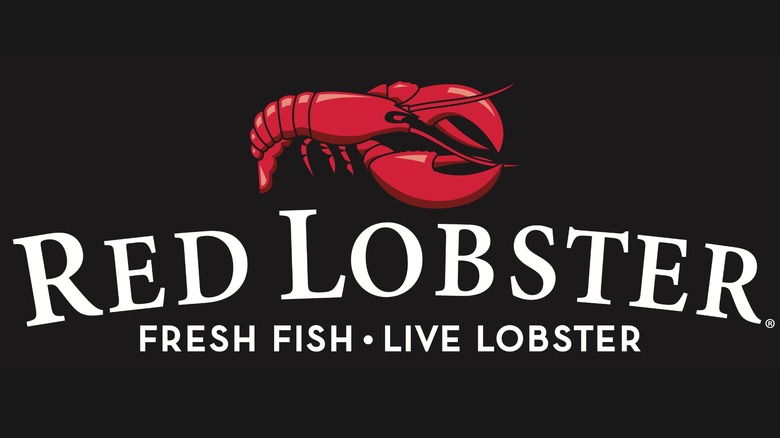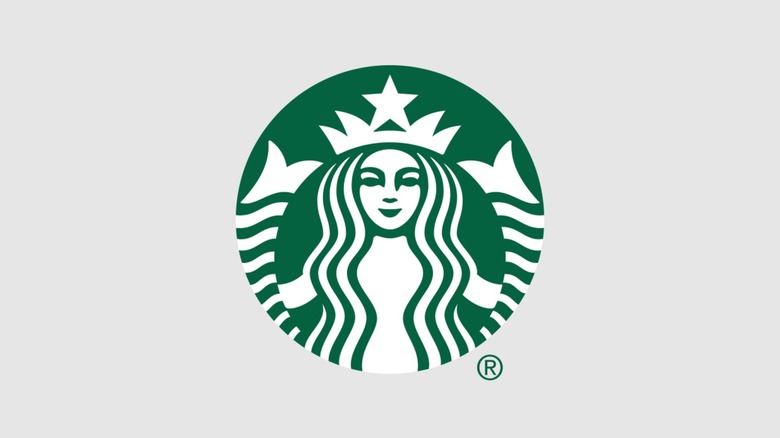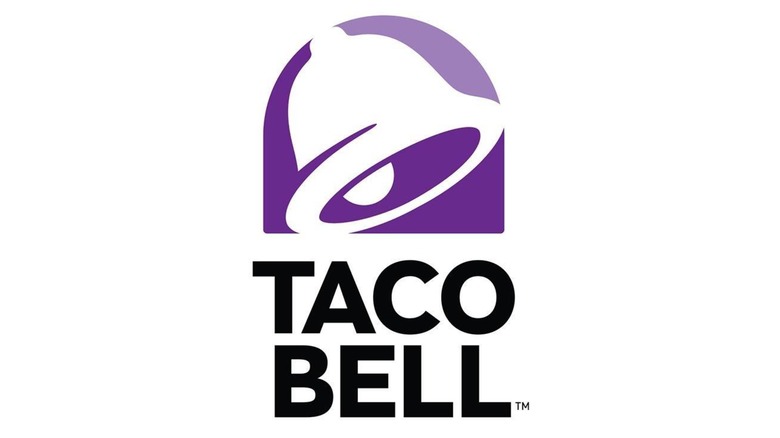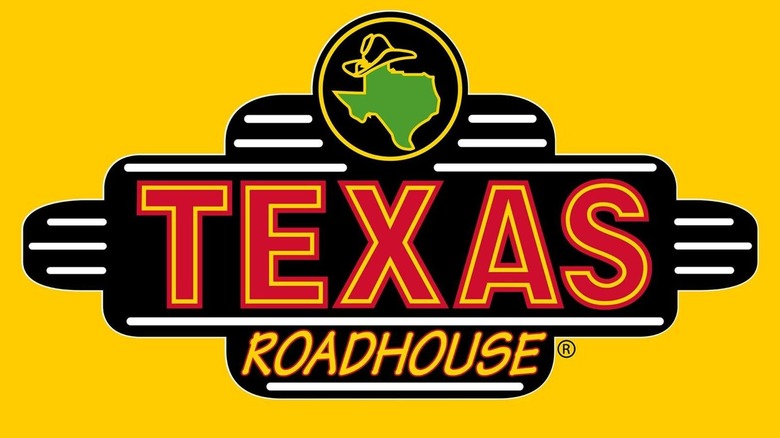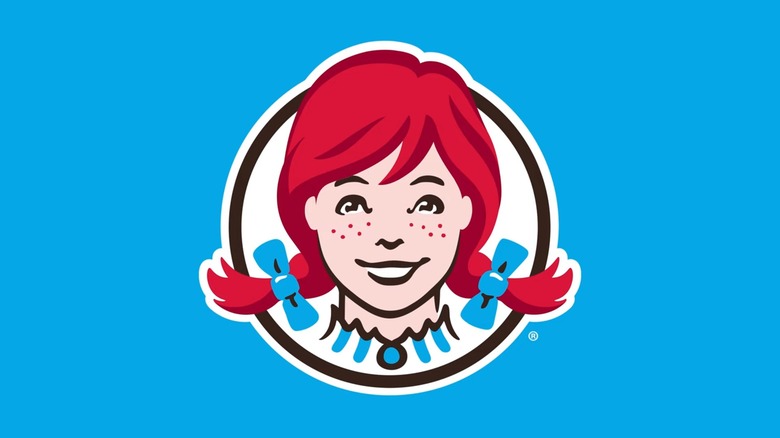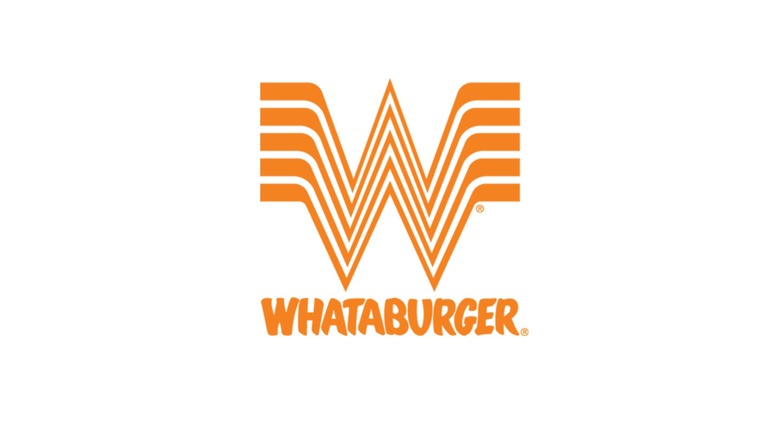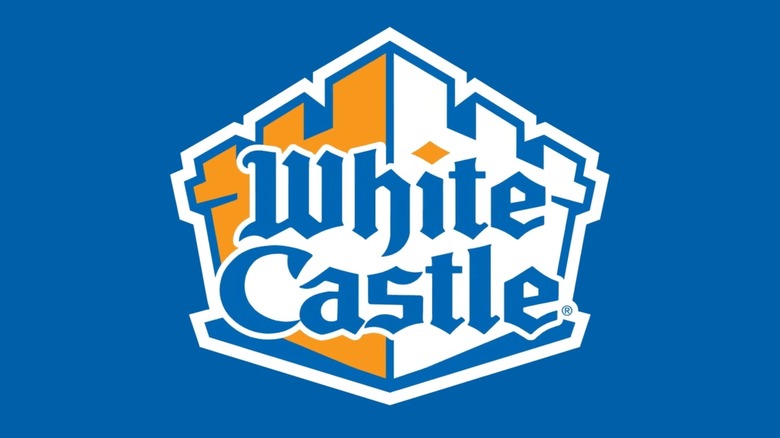23 Chain Restaurant Logos That Should Never Be Updated
With so many food restaurant chains out there offering tasty bites and drinks, having a strong brand presence is crucial. Well-designed logos play a significant role in a company's success, allowing customers to quickly recognize it at a glance. Certain iconic chain restaurant logos have stood the test of time, and we think they should hold onto their well-known features.
In our opinion, leaving a logo unchanged doesn't restrict a restaurant chain from making a few tweaks. Consider one of the oldest emblems in the world: Stella Artois' logo is older than the brand itself, as the original company was established in 1366 — well before the brand as we know it launched in 1926. The famed horn is still a prominent feature, but over the years, the brand has tweaked the word placement, font, and shading.
Meanwhile, some food logos have hidden messages that take decades for people to notice. For example, the bear in the mountain of the Toblerone emblem made headlines in 2022 after a 10-year-old noticed it — well after the candy started featuring the Matterhorn's jagged outline in 1970. (Unfortunately, Toblerone can no longer legally use its iconic Swiss mountain logo because of a geographical technicality.) With all that in mind, let's dive into the chain restaurant logos that should never change — if these companies can help it.
Arby's
In 1969, Arby's began using a logo featuring the red outline of a cowboy hat with its name situated between the top and the brim. In an attempt to modernize, Arby's changed its logo in 2012 but, after receiving negative customer feedback, changed it to a simpler refresh of the old favorite the following year. The minor updates to the font and dimensions have remained ever since, and we think the restaurant should stick with it.
Buffalo Wild Wings
When you're shown a winged buffalo on a yellow background, you no doubt immediately associate it with Buffalo Wild Wings. Those fundamentals of the logo's design have remained largely unchanged since its launch in 1998, receiving only a couple of modifications over the ensuing years. We think this winged buffalo should stick around for the long term, as it represents one thing that keeps guests coming back: Buffalo Wild Wings' delicious chicken.
Burger King
Burger King has been serving fast food customers since 1954, but its logo has seen a few changes during that time. The iconic design featuring the restaurant's name in bold red letters positioned between an orange burger bun launched way back in 1969. Clearly indicative of what you'll find on the menu, this emblem is still used today as the brand's primary design — unlike discontinued Burger King items that we probably won't see again, like its Whopperito. Between 1999 and 2020, the company also used an angled version featuring a blue, C-shaped arc curving around the left side.
Carl's Jr. and Hardee's
Despite establishing themselves as very different restaurants on opposite sides of the U.S., Hardee's and Carl's Jr. are similar in many ways because they're both owned by CKE Restaurants. Carl's Jr. first used the smiling yellow star logo with the red outline back in 1956, and Hardee's got the same treatment in 1998 (the year after CKE purchased the brand). Although the emblems obviously feature different names, the star has remained a distinct symbol for both ever since.
Chick-fil-A
When Chick-fil-A opened in 1967, its logo featured the side profile of a rooster in addition to the restaurant's name. Eventually, a redesign merged the bird's profile into the letter "C" written in an elegant red font, followed by the rest of the name. The rooster-decorated "C" is so iconic that seeing the emblem on takeout bags and cups is a dead giveaway for where you grabbed lunch. While the logo is usually red on a white background, it can appear as a white logo on a red background, too.
Chili's
Since Chili's opened in 1975, the logo has featured a pepper. This originally functioned as the apostrophe in the restaurant's name, but it became the primary feature in 2011. Rather than spelling out the brand's full title, the redesign featured the red chili pepper on its side with the green stem appearing as the apostrophe, followed by a green "S." While this image has remained the same ever since, Chili's gave its logo a temporary makeover in 2023 with artwork from its annual Create-A-Pepper program, bringing color to its signature symbol.
Cracker Barrel Old Country Store
Known for its homestyle comfort food since 1969, the logo for Cracker Barrel Old Country Store has prominently featured Uncle Herschel — the real uncle of founder Dan Evins — sitting in a chair and leaning against a barrel since 1977. The restaurant learned a valuable lesson in 2025, though, when it tried to modernize its logo by removing the "Old Timer": Its customers were too attached. After widespread backlash, Cracker Barrel brought back its old logo just seven days after initially announcing the change.
Domino's Pizza
The storied history of Domino's Pizza reveals that the restaurant began as Dominick's before rebranding in 1965. This included a logo change that featured an upright domino with one dot on top and two dots on the bottom. That domino has been a mainstay of the brand ever since. While the company has slightly adjusted the colors and positioning over the years, the domino and its pips (the dots) are still widely recognizable.
In-N-Out Burger
The present-day logo for In-N-Out Burger isn't quite the same as when the restaurant opened in 1948, but it hasn't changed since the company updated it in 1954. The yellow arrow piercing the name's red letters and stretching across the top is familiar even to those who don't have a location nearby where they can enjoy all the burger styles available at In-N-Out (which we've ranked).
Jack in the Box
Jack in the Box is one of those restaurants that went back and forth with its logo in its early years. Since its founding in 1951, the brand has used a literal jack-in-the-box, a red square featuring its name in white, and its name in plain red letters (among others). The current logo, a two-toned red cube with "Jack" written in white and the rest of the name written below, is a clever and modern design that first appeared in 2009. Although Jack Box (the mascot) isn't represented in this version, customers don't need him to start wanting Jack in the Box's value deals when they see that red box.
KFC
Putting the likeness of founder Harland Sanders into the KFC logo in 1959 was one of the best decisions this restaurant chain ever made. While the emblem has morphed into a minimalist design, there's no denying that the Colonel exudes the tradition that people expect from the menu. KFC implemented some exciting changes in 2025 — from moving its headquarters to Texas to a sweet-heat collaboration with Mike's Hot Honey — but keeping Colonel Sanders as a symbol means the restaurant is staying true to its heritage.
Little Caesars Pizza
Little Caesars Pizza is known for having fun with its menu and collaborations — like with its 2025 Super Bowl ad starring Eugene Levy's eyebrows and crazy puffs. While its mascot, Little Caesar, has appeared in some capacity ever since 1962, the brand officially added him to the logo in 1979 as part of a company-wide rebrand. Little Caesar has seen some updates over the years (his chest hair, for example, is now gone), but he remains one of the most widely known fast food restaurant emblems out there.
LongHorn Steakhouse
When LongHorn Steakhouse opened in 1981, it had a blended logo: The name was written in chunky, western-style letters with the first "O" turned into a steer head and the "T" replaced with a steak. The brand's most iconic graphic art, depicting a steer's head placed either above or before the name in layered text, didn't come until 1996, but it's what most people associate with the restaurant now. Even without the name, the logo makes mouths water for a Flo's Filet — our highest-ranked steak at LongHorn Steakhouse.
Marco's Pizza
Since its founding in 1978 by Pasquale "Pat" Giammarco, Marco's Pizza has struggled a bit with store closures. However, we now consider it a once-failing Italian restaurant chain on its way back up thanks to store redesigns and innovative menu items. Fortunately, one aspect has remained unchanged: The specially designed "M" in its logo. It creatively incorporates a pepperoni pizza (with a slice missing out of the top) into the letter's central, upward-facing V shape. The fact that this symbol has been used from the beginning is reason enough to never change it.
McDonald's
Surprisingly, McDonald's started out as a barbecue restaurant way back in 1940. The founding brothers, Dick and Mac McDonald, rebranded it into a burger venue in 1948, and that included a complete logo revamp. However, not until 1953 were the famous golden arches used in the roof design, becoming an integral part of the restaurant's identity. Then, in 1961, these arches merged to form an "M" in the logo for the first time, where they have remained ever since as a distinguishing feature of the brand.
Panda Express
Since Panda Express opened in 1983, its logo has proudly donned its furry namesake. The panda is also featured (albeit in a different position) on the logo created for Panda Inn — which is owned by the same parent company, Panda Restaurant Group, Inc, and was established in 1973. This longstanding symbol is so iconic in America that seeing a panda on a red background stirs hunger for the chain's original orange chicken — the winner in our ultimate ranking of Panda Express items.
Red Lobster
After filing for bankruptcy in 2024 and closing dozens of locations, Red Lobster is planning a major comeback with a reorganization that includes a sale and a new CEO, who aims to revive the beloved restaurant chain. Let's just hope that the new owner and executives don't change the logo — at least too much. Since the company opened in 1968, a bright-red lobster has always been a prominent feature.
Starbucks
The siren in the Starbucks logo might be one of the most recognizable mascots in the food industry — even among folks who prefer local coffee shops. She's been a distinctive piece of the emblem since the company started in 1971. However, there have been a few changes over the years. The original siren had bare breasts that have been covered with her hair since 1982. As of 2011, the brand name encircling the siren is also gone. Starbucks may have removed 30% of its menu in early 2025, but a logo without the siren just wouldn't be the same.
Taco Bell
The first Taco Bell location opened in 1962, but its now-recognizable bell logo didn't appear until 1985. In conjunction with the name of the restaurant, the bell pays homage to founder Glen Bell and the company's connection to both California and Mexico. Like the cost of a Taco Bell taco — which actually hasn't changed too much when adjusted for inflation — the bell logo has only seen slight updates to the colors and font.
Texas Roadhouse
Texas Roadhouse, founded by Kent Taylor in 1993, is the youngest restaurant chain on this list. However, there's no denying that the cowboy hat-capped outline of Texas is an unmistakable symbol of the legendary service and made-from-scratch food that guests can expect from the chain. In fact, Texas Roadhouse uses fresh, USDA Choice beef cut by in-house butchers. The state outline has also been part of the restaurant's identity since the very beginning. Plus, the neon-style design of the lettering has been in place since 1996, so it's hard to imagine it looking any different.
Wendy's
Most folks presented with a smiling, pig-tailed redhead with freckles can identify her immediately. Since the first Wendy's started serving customers in 1969, a likeness of founder Dave Thomas' daughter has appeared in the logo — after all, the restaurant's title was her nickname. While the original colors and general style have remained throughout the years, the most modern Wendy's logo seemingly added a hidden message — "Mom" — in the girl's ruffled collar. However, a company spokesperson revealed this was unintentional.
Whataburger
The story of Whataburger starts in 1950 with a logo that featured the name above a depiction of the restaurant. While the brand changed this design in 1968 to embody the A-frame buildings launched in 1961, this version was short-lived. The restaurant chose a "Flying W" for its new emblem from a design contest in 1973. Fortunately, the logo has remained front and center ever since, unlike what happened to the Whataburger mascot — Whataguy, an ambassador for the company's food insecurity and education community program who the public only sees occasionally.
White Castle
Holding the title for the first fast food hamburger chain in the world, White Castle was established in 1921 with its invention of small, square burger patties (that's right — contrary to popular belief, Wendy's didn't invent the square patty). Each restaurant location was designed to look like small castles, and a castle was featured on both the carry-out bags from 1927 and the very first newspaper coupons from 1933. However, the logo didn't get the castle treatment until 1983. It has undergone some modern updates, but a White Castle emblem without a castle just wouldn't seem right.
